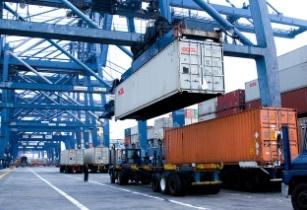South Africa’s total import and export container trade market experienced consistent 10 per cent year-on-year growth during the Q3 2017, according to Maersk Line Southern Africa
However, Matthew Conroy, trade manager of Maersk, pointed out the other, less positive, perspective on quarter three’s trade market development. Conroy said, “While 10 per cent year-on-year growth is encouraging, this is not a true reflection of real growth as, when taking into account the significant container trade market contraction recorded in 2016, this growth is actually only about 2.5 per cent (2017 versus 2015).”
Looking at imports and exports, Conroy said that the two markets are shaping up slightly differently, with exports growing at a faster pace than imports.
“Year to date (YTD), 45.3 per cent of the container trade was a result of exports (54.7 per cent imports), which is slightly up from a year ago (44.7 per cent) but well above the 2012 figure of 42.3 per cent. So, there has been a continuing balancing of trade, which is largely due to the increase of export mining commodities,” he added.
The import market has grown by nine per cent YTD, with the majority of this growth coming from Asia (13 per cent), which represents 53 per cent of imports into South Africa. Compared to 2015, 2017 has seen no market growth. The main reason for this volatility is that in 2016, inventory stocks were run very low, whereas in 2017, stocks have been replenished to a higher degree.
Considering the sluggish consumer spending seen in the current market, Conroy further suspected that there will be a future slowdown in import market growth. It is likely that the rest of the year will continue at a similar rate as YTD, with 2018 seeing a slowdown of low single digit growth.
While the export market has grown by 12 per cent YTD, there has only been five per cent since 2015, when taking 2016 into account. Exports have shown steadier growth than imports. The markets to Asia and Middle East are growing at the fastest rate (more than 15 per cent) because of higher demand for mining commodities in India and China, whereas manufactured exports is stagnate.
Refrigerated exports have grown by nine per cent YTD, but by 14 per cent in the third quarter, which is mostly due to a strong citrus crop, coupled with strong demand overseas for South African fruit.
Regarding expectations going forward, Conroy said that mining commodities should continue to grow, with current levels of five per cent, while refrigerated exports expecting to see flat growth.





















